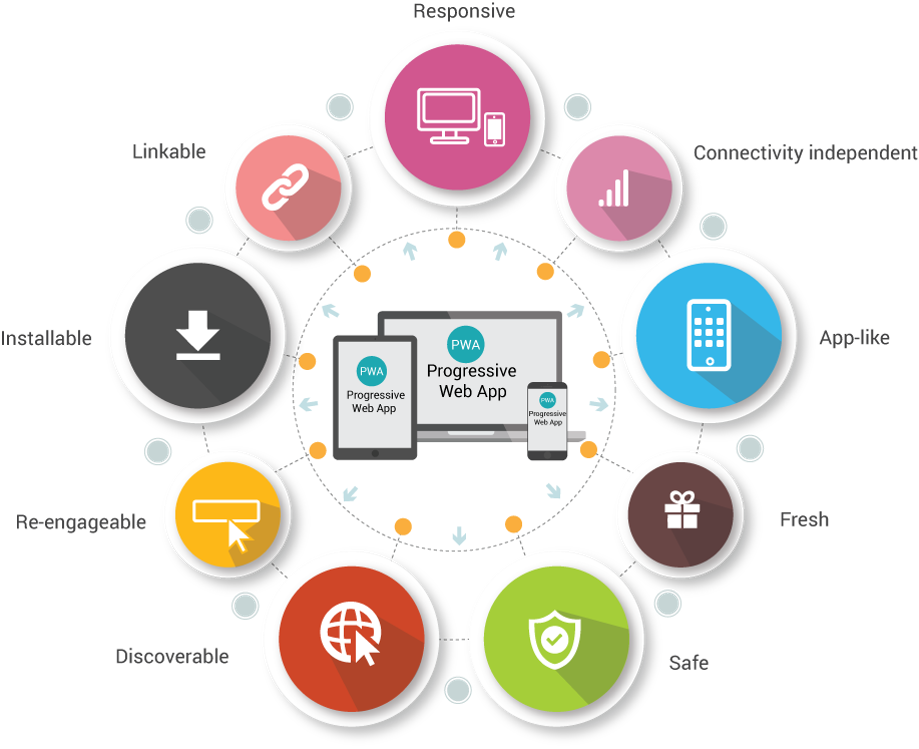
How to Build a Progressive Web App (PWAs) with React
Apps were just a mere idea when it was first introduced decades ago. People didn’t have any idea about how these apps were going to change their lives completely. If you asked a person about apps 15 years ago, the answer would have been different than that of today. But, as of now, all of our daily lives revolve around these applications. From these apps emerged another concept of apps, known as Progressive Web Applications or in short, PWAs. Now you might be wondering how they differ from traditional apps. I’ll ask you to hold on because that’s what we are going to talk about in this blog. Once you finish reading this thoroughly, you’ll get an idea of what is PWA, its features, components, and how one can build them using React. Now, let’s get started with the basics.
What are PWAs?
How would you feel if you could access some parts of your application without an internet connection? You’d love it right?! Well, to be precise that’s what a progressive web application does. It allows you to access some parts of an app without having a proper internet connection.
Wondering how it happens?
Basically, PWAs use cache memory to load pre-loaded data and showcase it to its users. Spotify is the best example of a PWA since you can have access to your downloaded music without having an internet connection. I hope it has started making sense to you. Furthermore, these applications are faster, more reliable, and smaller in size than traditional applications. Basically, it joints the features of a native app and a web app and gives you the advantage of both in one. The best thing about progressive web applications is that they are less expensive than traditional apps and are used by tech giants like Uber, Twitter, Pinterest, Spotify, Tinder, and many others.

1. Fully Responsive & Browser Compatible
Progressive web applications are built to adapt to different screen sizes and provide full responsiveness while operating them. Moreover, these apps are compatible with all the commonly used browsers, making them a great choice.
2. Discoverability & Easy Installation
PWAs are easily discoverable because of search engine optimization and their URLs, making them easy to be found on the web. Installation of PWAs is similar to the Native apps and can be easily added to the home screen of the user.
3. Automatic Updates
This is a nice feature of PWAs that they don’t need to be manually updated as they can are built to update automatically without any effort. This ensures that the user is running an app with automatic bug and error fixes.
4. Safety & Security
PWAs are safe to use and protect the sensitive data of their users like traditional applications. They function via HTTPS, which means that no unauthorized user can have access to their data.
5. Offline Functionality
This is the most advanced feature of a PWA and it can work with minimum or no internet connection. PWAs usually store the data in cache memory and reload the data when there’s a network shortage.
6. App Like Feeling
PWAs have Native apps like interface that works seamlessly on different devices, like smartphones, desktop, and tablets. These apps are smaller in size which is why they have a faster loading time than traditional apps, making them a preferred choice for users nowadays.
